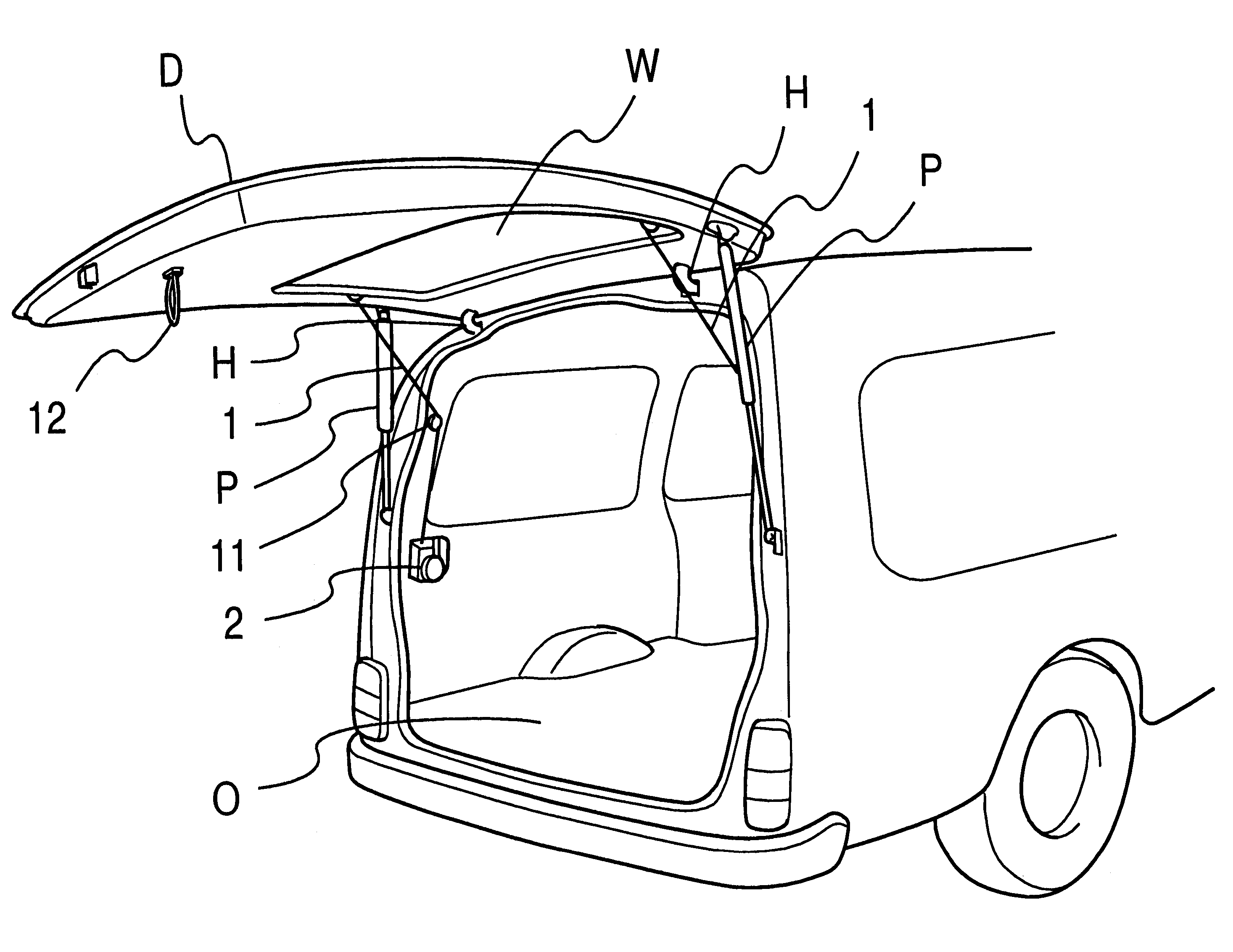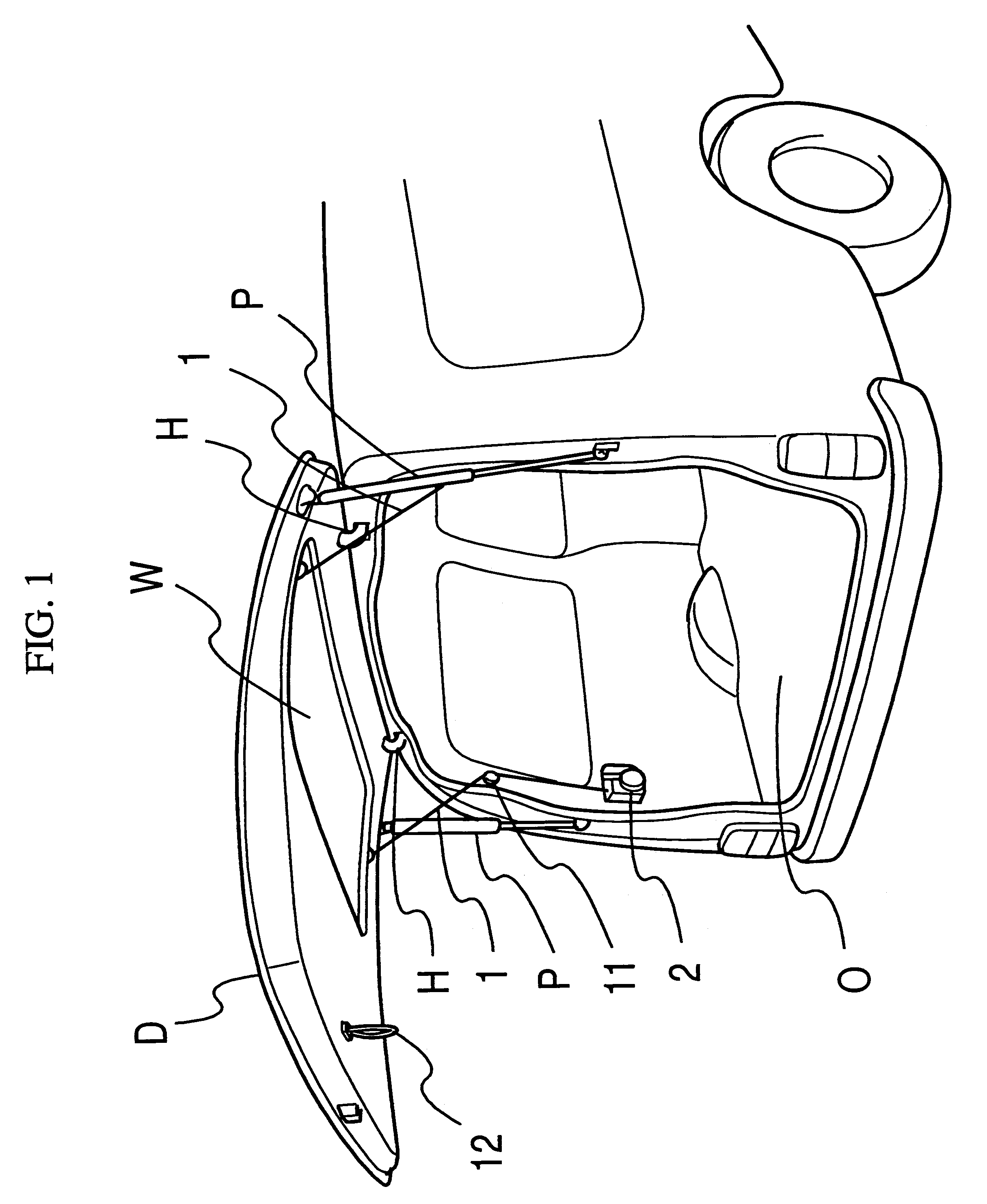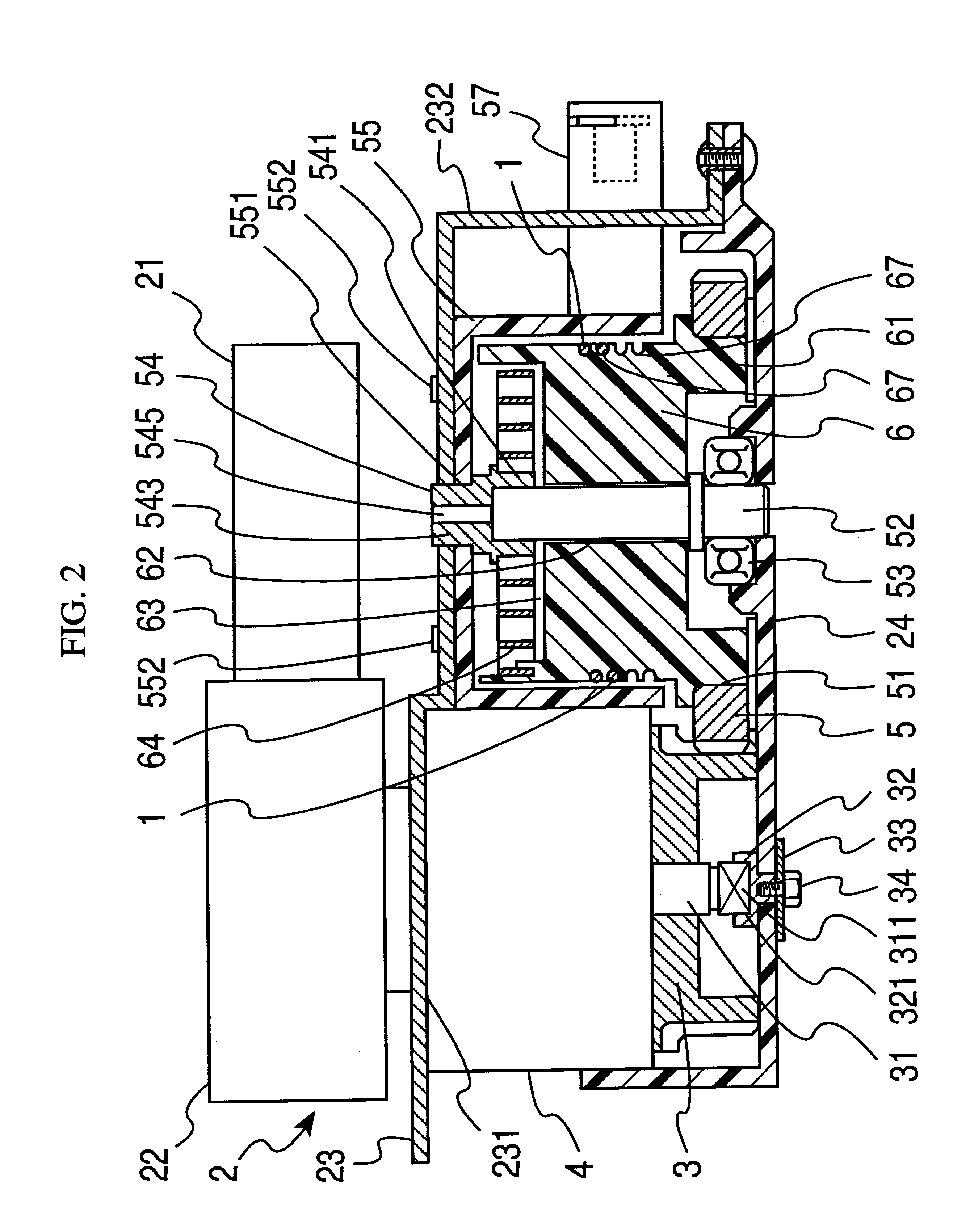Automatic closer of pop-up door of vehicle
a pop-up door and automatic technology, applied in the direction of doors, roofs, wing accessories, etc., can solve the problems of inability of the wire-winding device to wind the connection wire in a short period of time, the rear door is swung downward against the press-up force of the damper, and the door is closed
- Summary
- Abstract
- Description
- Claims
- Application Information
AI Technical Summary
Benefits of technology
Problems solved by technology
Method used
Image
Examples
second embodiment
In a second preferred embodiment: of the present invention, the switch 12 for closing the rear door (D) of the first embodiment is not used. FIG. 10 shows the pulley 6 of the second embodiment. A ring plate 68 made of black resin constituting a rotation detection means is fixed to the periphery of the pulley 6. A large number of transparent holes 681 are in the periphery of the ring plate 68 at regular intervals. A pair of projections 691 and 692 spaced at a certain interval vertically are at the front of an optical sensor 69 to sandwich the periphery of the ring plate 68 therebetween. When a transparent hole 681 is coincident with the projections 691 and 692, light emitted by a light emitting element inside the projection 691 passes through the transparent hole 681, thus illuminating a light receiving element inside the projection 692. The optical sensor 69 outputs pulse signals to an unshown motor control circuit each time the transparent hole 681 becomes coincident with the proje...
third embodiment
FIG. 11 shows a part of the connection wire 1 extending from the wire-connected portion of the rear door (D) to the guide roller 11 proximate to the edge of the rear opening (O) of the vehicle body according to a third preferred embodiment of the present invention. A coil spring 15 serving as a guide member is on a fixed bracket 14 for accommodating the connection wire 1 extending from the wire-winding device 2 (see FIG. 1) to the rear door (D). The coil spring 15 accommodating the connection wire 1 forms a certain angle with the linear locus (shown by double dot-dash line) of the connection wire 1 extending from the fixed bracket 14 to the guide roller 11, thus causing the connection wire 1 to greatly extend sideways. It is preferable that the coil spring 15 extends away from the periphery of the rear opening (O). The construction of winding the connection wire 1 is similar to that of the first embodiment.
When the rear door (D) is automatically closed, a tensile force is applied to...
fourth embodiment
In a fourth preferred embodiment of the present invention, the coil spring 15 is installed at a position different from that of the third embodiment, as shown in FIG. 13. FIG. 13 shows the connection wire 1 extending from the guide roller 11 on the rear part of the vehicle body proximate to the periphery of the rear opening (O) to the wire-winding device 2. The coil spring 15 accommodating the connection wire 1 and the guide roller 11 are held together as a unit. The coil spring 15 forms a certain angle with the linear locus (shown by the double dot-dash line) of the connection wire 1 extending to the wire-winding device 2, thus causing the connection wire 1 to greatly extend sideways. It is preferable that the coil spring 15 extends outward and sideways from the periphery of the rear opening (O). The construction of winding the connection wire 1 is similar to that of the first embodiment.
When the rear door (D) is automatically closed by the driving motor 21 (see FIG. 2), a tensile ...
PUM
 Login to View More
Login to View More Abstract
Description
Claims
Application Information
 Login to View More
Login to View More - R&D
- Intellectual Property
- Life Sciences
- Materials
- Tech Scout
- Unparalleled Data Quality
- Higher Quality Content
- 60% Fewer Hallucinations
Browse by: Latest US Patents, China's latest patents, Technical Efficacy Thesaurus, Application Domain, Technology Topic, Popular Technical Reports.
© 2025 PatSnap. All rights reserved.Legal|Privacy policy|Modern Slavery Act Transparency Statement|Sitemap|About US| Contact US: help@patsnap.com



